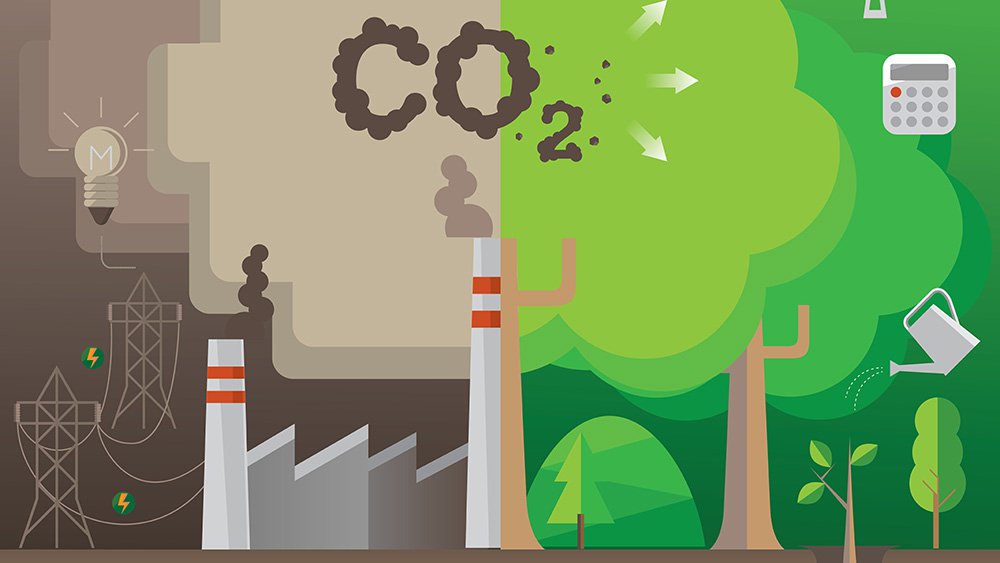Designing a Carbon Trading and Service Hub involves creating a platform or infrastructure that facilitates the buying and selling of carbon credits, provides information and services related to carbon trading, and supports businesses and organizations in their efforts to reduce carbon emissions. Here’s a conceptual framework for designing such a hub:
1. User-Friendly Interface:
- Develop an intuitive and user-friendly platform accessible via web and mobile devices.
- Provide a dashboard summarizing carbon trading activities, emission reductions, and market trends.
2. Carbon Credit Marketplace:
- Create a marketplace where businesses can buy and sell carbon credits.
- Include features like smart contracts to automate transactions securely.
- Provide a transparent registry of carbon credits, detailing project information and verification status.
3. Data Analytics and Reporting:
- Integrate robust data analytics tools to offer insights into carbon market trends.
- Generate comprehensive reports for businesses to track their carbon footprint, emissions reductions, and trading history.
4. Carbon Footprint Calculator:
- Include a tool that helps businesses and individuals calculate their carbon footprint.
- Offer suggestions for emission reduction strategies and projects.
5. Verification and Certification:
- Implement a rigorous verification process for carbon credits to ensure credibility.
- Collaborate with recognized certification bodies for third-party validation.
6. Educational Resources:
- Provide educational materials and resources on carbon trading, emission reduction strategies, and sustainable practices.
- Host webinars and workshops to keep users informed and engaged.
7. Carbon Offset Projects Database:
- Maintain a comprehensive database of carbon offset projects, detailing their impact, location, and methodologies.
- Include projects from various sectors, such as renewable energy, afforestation, and methane capture.
8. Regulatory Compliance:
- Stay up-to-date with global carbon trading regulations and ensure the platform complies with international standards.
- Facilitate easy adherence to regional and national carbon reporting requirements.
9. Community and Networking Features:
- Foster a community within the hub for businesses, investors, and carbon market enthusiasts.
- Include forums, discussion boards, and networking opportunities.
10. Integration with Financial Platforms:
- Integrate with financial platforms to streamline payment processes and financial transactions.
- Provide real-time tracking of payments and financial transactions.
11. APIs for Integration:
- Develop APIs to allow integration with third-party tools and platforms, fostering a more comprehensive carbon management ecosystem.
12. Customer Support:
- Establish a responsive customer support system to assist users with any issues or queries.
- Include chat support, knowledge base, and FAQs.
13. Scalability and Security:
- Design the platform to be scalable to accommodate a growing user base.
- Implement robust security measures to protect sensitive data and transactions.
14. Global Access:
- Ensure the platform is accessible globally, accommodating users from different regions and time zones.
15. Partnerships and Collaboration:
- Collaborate with businesses, governments, NGOs, and other stakeholders to expand the reach and impact of the hub.
By incorporating these features and principles, a Carbon Trading and Service Hub can serve as a central and effective platform for managing carbon emissions, promoting sustainability, and facilitating the growth of the carbon market.
What are the two types of carbon trading?
The two main types of carbon trading are:
- Cap-and-Trade (Emissions Trading System – ETS):
- How it works: Governments or regulatory bodies set an overall cap on the total amount of greenhouse gas emissions that can be released by industries within a specific jurisdiction. This cap is then divided into individual allowances or permits, each representing the right to emit a certain amount of greenhouse gases.
- Allocation of allowances: Industries covered by the cap are allocated a certain number of permits. These allowances can be freely distributed, auctioned, or a combination of both.
- Trading: Companies that emit below their allocated limits can sell their surplus allowances to those exceeding their limits. This creates a financial incentive for companies to reduce their emissions.
- Flexibility: Cap-and-trade systems provide flexibility for industries to find the most cost-effective ways to reduce emissions, and the overall emissions reduction is achieved in a market-driven manner.
- Offset Trading:
- How it works: Offset trading allows entities to invest in emission reduction projects outside the capped sectors to offset their own emissions. These projects generate carbon credits, also known as offsets, which can be bought and used by companies to compensate for their own emissions.
- Project types: Offset projects can include activities such as reforestation, renewable energy projects, methane capture, and other initiatives that lead to a reduction in greenhouse gas emissions.
- Verification: Offset projects need to be verified and certified by recognized standards and undergo rigorous third-party validation to ensure the claimed emissions reductions are real and additional to business-as-usual.
- Use in compliance: Companies can use these offset credits to meet a portion of their emission reduction obligations or sell them to others looking to offset their emissions.
Both cap-and-trade and offset trading are mechanisms designed to create economic incentives for companies to reduce their greenhouse gas emissions. These systems contribute to the overall goal of mitigating climate change by encouraging the adoption of cleaner technologies and practices. The specific design and implementation of carbon trading systems can vary by region and regulatory framework.

